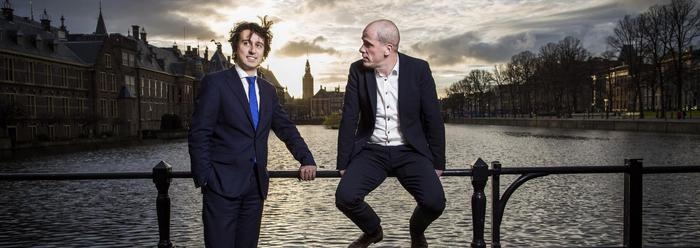Dutch Climate Law
Interesting about this collaboration is that one of the politicians is working from within the coalition, whereas the other one works from within the opposition. The collaboration between politicians from both sides has never happened before in the Dutch history and perfectly illustrates the danger of climate change to all of us, regardless of the background. Very few other countries, such as the Great-Britain and Mexico, have already implemented such a climate law.
The goals which are presented by these politicians are stated by Greenpeace, of which one of the politicians used to be the campaign leader. The goal is to be cleared from fossil fuels in 35 years, which means that in 2050, all or energy comes from sources such as bio mass, wind, sun and geothermal.
A first proposal from this plan is to close all the coal power plants within the next ten years. This sounds like a logical first step, but some thorough analysis of the situation already presented some problems. Minister of Economic Affairs Henk Kamp has tried to put the plan in perspective. He mentions that on the first of July 2017, 5 coal power plants will still be active, of which 3 are only operating since this year and are therefore brand new. Building these plants has cost billions of euros and the immediate shutdown of these plants won’t directly lead to a reduction of the exhaust of CO2. Simply because the plants are part of the EU Emission Trading Scheme, our reduced CO2 production can be exhausted somewhere else in Europe.
Secondly, the burning of bio mass, which also happens within these coal plants, cannot be done anymore. Therefore, we are getting further away from being able to attain our goals regarding producing sustainable energy. And as a third, the energy that we will need to get from across our border to replace the missing energy from the modern coal power plants, might come from plants which burn brown- or hard coal and is even worse regarding emissions compared to the modern coal plants here in the Netherlands.
In my opinion, the idea behind this climate law is obviously very noble and something we should encourage immediately. But the counter arguments also show that the plan lacks some realistic outcomes and neglects everything that happens behind the border. Therefore, I’d be much more interested in the implementation of sustainable energy plants, since they can simply replace these unsustainable ones. Actively produce sustainable power instead of minimizing unsustainable power production would help us to attain our sustainable goals, would make us less independent of sources from across the border and would be a great example towards other countries in the EU and the rest of the world.
The existing coal power plants can be replaced one by one over a time span in which these plants can still be used for the burning of bio mass as sustainable source. In my opinion this would be the most environmental friendly, economically feasible and realistic scenario within this noble plan.
